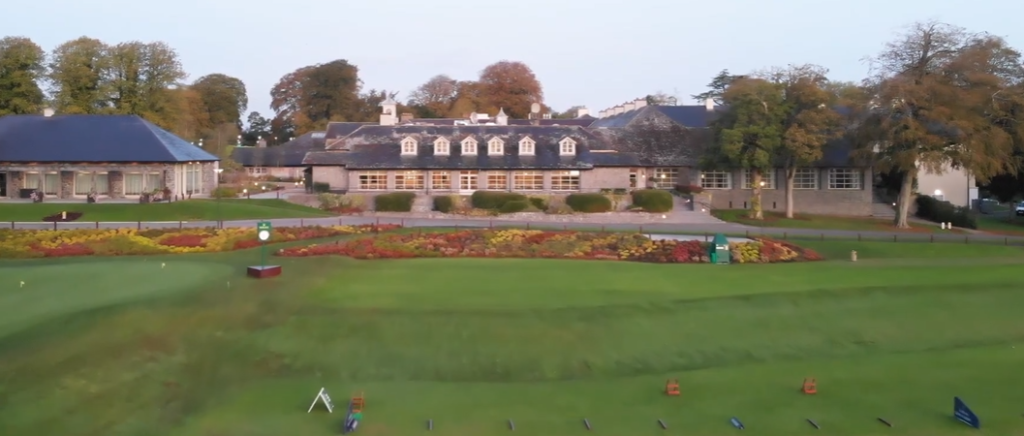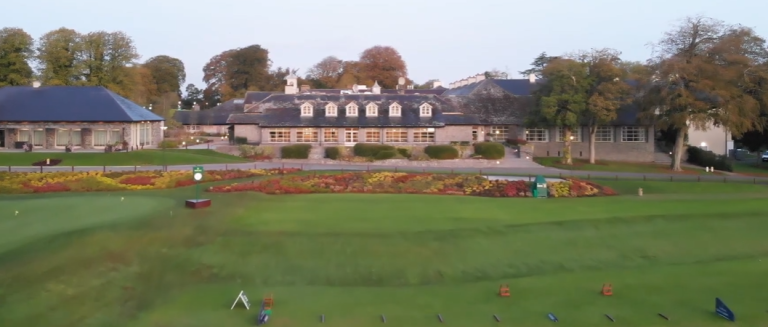Mount Juliet Estate, nestled in Kilkenny’s emerald landscape, invites rather than shouts. This 500-acre estate is more than just picturesque; it is well-planned and incredibly successful at combining the low-key prestige of a Georgian manor with experiences that are both decadent and spontaneous. Still pulsing with that romantic origin, the estate was first created in 1757 by the Earl of Carrick as a tribute to his wife, Lady Julianna Butler. Instead of flaunting luxury, it whispers it. Visitors enter the pages of an ongoing romance, adorned with Michelin stars, exquisite linen, and gravel walkways winding through old forests.
Mount Juliet has undergone a significant makeover in the last ten years, embracing modern hospitality while meticulously conserving its history. Everything feels deliberate, from the expertly crafted cocktails at The Saddle Bar to the finely tailored drapes in the Manor House. It’s hardly surprising that the estate has drawn reoccurring families, upscale business retreats, and couples seeking a rejuvenating getaway that feels more like home than a check-in.
Mount Juliet Estate
| Attribute | Description |
|---|---|
| Name | Mount Juliet Estate, Autograph Collection |
| Location | Thomastown, County Kilkenny, Ireland |
| Established | 1757 |
| Estate Size | 500 acres |
| Rooms | 125 total (32 in Manor House, 93 in Hunter’s Yard) |
| Dining | Lady Helen (Michelin-starred), The Hound restaurant |
| Golf Course | Jack Nicklaus signature-designed 18-hole course |
| Activities | Falconry, equestrian trails, fishing, archery, pool, spa |
| Historical Note | Built by Earl of Carrick for Lady Julianna Butler |
| Website | https://www.mountjuliet.ie |
Mount Juliet provides something remarkably akin to a pause button in the context of contemporary travel, where utility and speed frequently take precedence over ambience and subtlety. It serves as a reminder of what elegance once meant and how it can feel relevant once more thanks to its stone walls and vaulted ceilings. Dining at the Michelin-starred Lady Helen is especially inventive because of the menu’s strong local roots as well as Head Chef John Kelly’s accuracy and taste. Nearby, the vegetables are grown. Local waters are the source of the trout. The meat comes from farms that probably employ the estate’s employees. This is about tasting Kilkenny, not just about eating well.

The estate has become extremely effective at accommodating multigenerational groups by utilizing its historic infrastructure and diversifying into a wider range of lifestyle offerings. Hunter’s Yard provides sleek, slightly more modern accommodations ideal for weddings or families, while the Manor House appeals to those looking for old-world charm. Guests can customize their stay without sacrificing the experience thanks to this duality, which is kept with remarkable clarity. It’s “a five-star resort with two personalities and one soul,” according to one recent visitor.
The demand for heritage-rich getaways and staycations has increased dramatically in recent years. Mount Juliet responded by embracing experiential tourism. Guided fishing on the River Nore, dawn falconry displays, and horseback rides through forests aren’t extravagances; they’re experiences that create memories. These encounters produce the kinds of moments that defy hashtags and necessitate storytelling, making them especially advantageous for couples or families looking to disconnect from the cacophony of digital media.
Visitors frequently compliment the personnel, particularly the concierge desk staff, who constantly go above and beyond the call of duty. One of the estate’s most notable employees, David, is frequently praised for his astute methods, which include calling returning visitors by name, setting up smooth golf transfers, and subtly identifying when someone simply needs a tea break by the fire. It takes effort to provide that caliber of service. It is the outcome of years of training combined with a culture that values both technical hospitality and emotional intelligence.
For good reason, the Jack Nicklaus-designed golf course is a major attraction. Its design is incredibly resilient to weather-related wear and provides serious golfers with strategic play. It has established a reputation for being balanced—tough but not harsh—after hosting the Irish Open. The views that accompany each shot as well as the fairway’s technicalities leave a lasting impression on golfers. With every swing, you take in the countryside in addition to playing the course.
Filmmakers, honeymooners, and obscure celebrities looking for peace without spectacle have also been drawn to Mount Juliet because of its ability to blend contemporary comfort into a historically significant location. Walking through its hallways in the early evening, with the light fading and the aroma of turf fires rising, and the piano softly spilling from a room down the corridor, has a certain cinematic quality. This would be the set for a movie directed by Nancy Meyers in Ireland.
By forming strategic alliances, especially with Marriott’s Autograph Collection, the estate has broadened its appeal without sacrificing its unique identity. This action has maintained the carefully chosen atmosphere of an independent boutique experience while drastically lowering access barriers for tourists from around the world. Mount Juliet strikes a particularly sweet spot for frequent travelers who yearn for individuality but pursue loyalty benefits.
The significance of the estate goes beyond just hospitality. It has emerged as a model for how upscale real estate can contribute more actively to regional ecosystems in recent years. By working with Irish food producers and offering jobs in the hospitality, landscaping, and wellness industries, Mount Juliet is subtly upholding not only its own heritage but also the local economy of Kilkenny. At a time when sustainability is becoming more and more important, the estate’s local-first approach seems especially progressive.
With good reason, weddings at the estate have grown significantly in popularity. The scene is classic. Couples looking for something fairy tale-like but realistic have turned to Mount Juliet because of the team’s ability to create a flawless experience, where everything from the champagne toast to the last dance feels staged but genuine. Grandparents and young children, uncles and best friends, all feel equally represented there.
From the standpoint of return on experience, a concept that is becoming popular among wealthy tourists, Mount Juliet does remarkably well. Visitors depart with moments that feel handcrafted, not only refreshed but also rested. And that might be the estate’s greatest asset: it maintains its individuality and self-assurance in a time when everything is made to be mass-produced.

